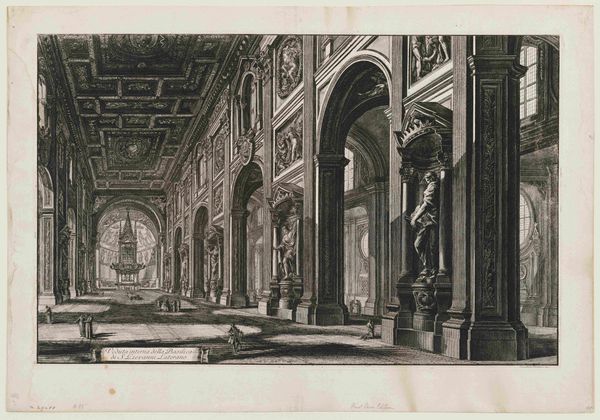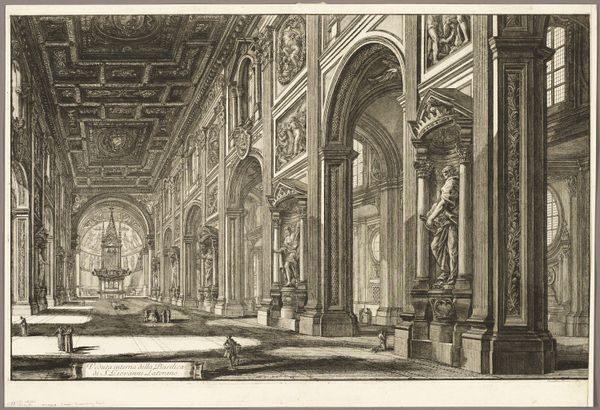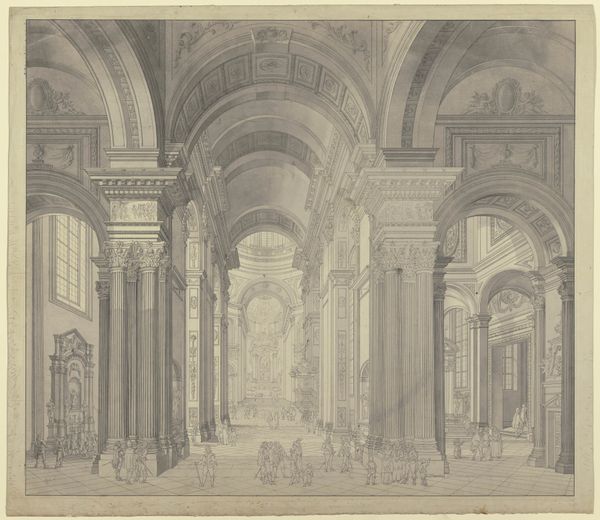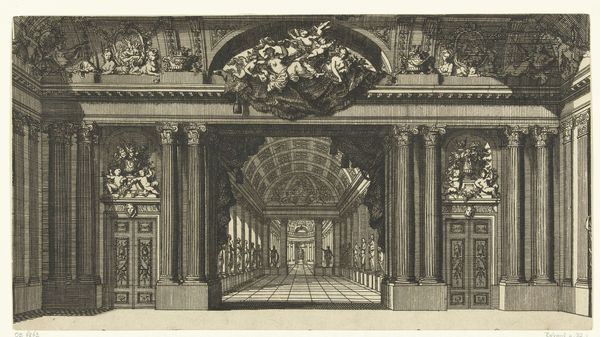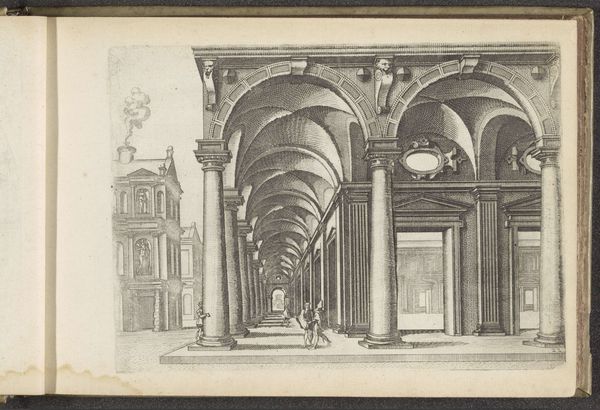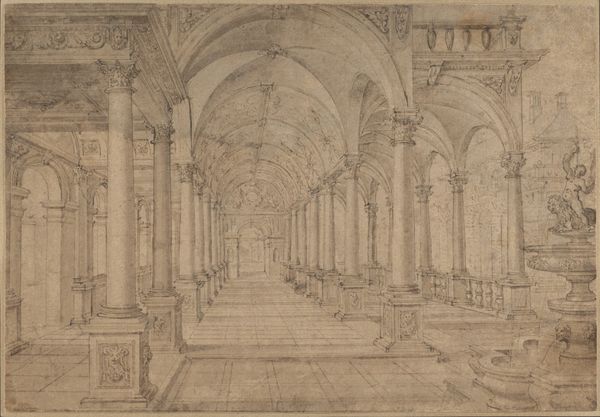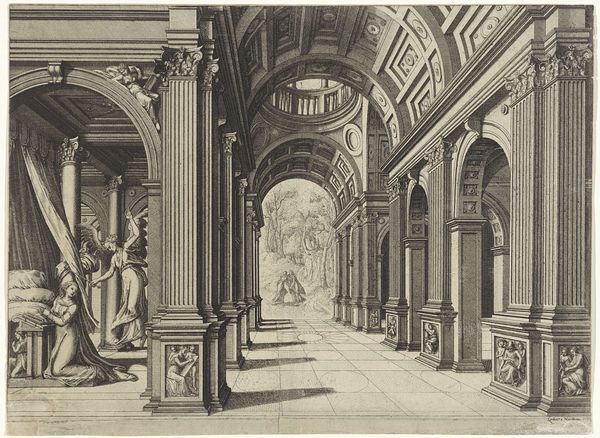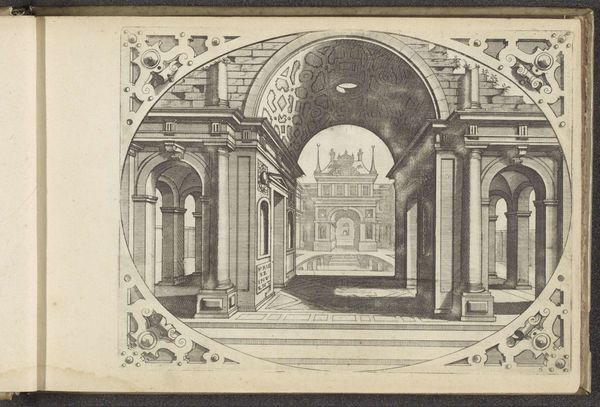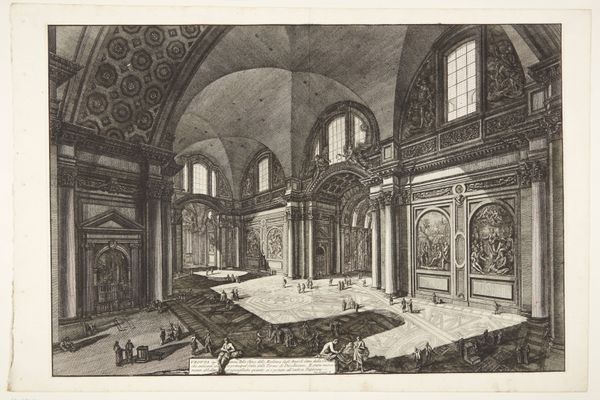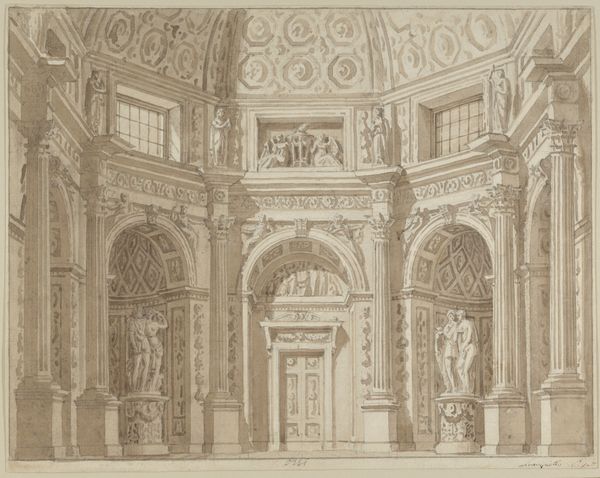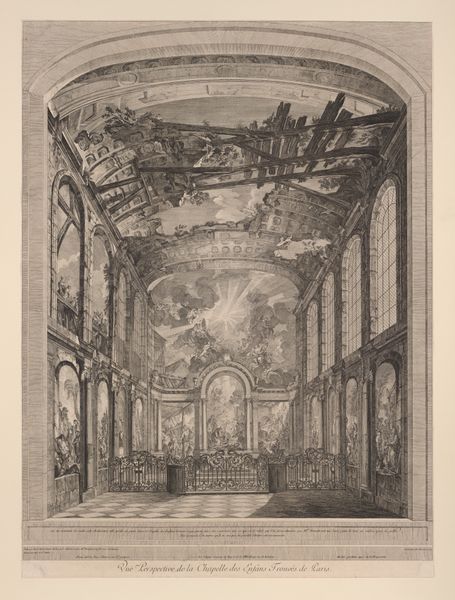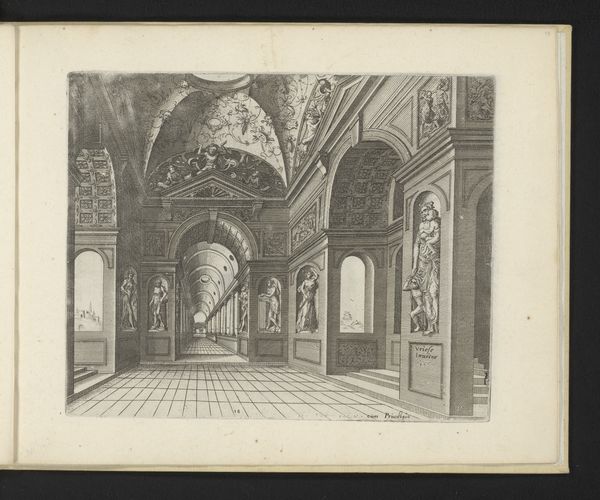
Perspective view of the interior of a hall, with cross-vault decorated with grotesques, plate 18, from Scenographiae sive Perspectivae 1601
0:00
0:00
drawing, print, intaglio, engraving, architecture
#
drawing
# print
#
intaglio
#
perspective
#
11_renaissance
#
arch
#
italian-renaissance
#
engraving
#
architecture
Dimensions: plate: 8 1/4 x 10 1/4 in. (21 x 26 cm) sheet: 8 3/4 x 10 7/8 in. (22.2 x 27.6 cm)
Copyright: Public Domain
Editor: So, this is Hans Vredeman de Vries’s “Perspective view of the interior of a hall…” from 1601. It's an intaglio print, and I am struck by the vastness it suggests despite being a relatively small image. What symbolic readings can we find in this incredibly structured space? Curator: It's interesting that you use the word "structured." Indeed, Vredeman de Vries employs perspective to not only depict but also construct a space brimming with Renaissance ideals. Think about what this represents: the rational ordering of the world, the humanist focus on man as the measure of all things, reflected in these sculptures placed within an architectural fantasy. Does it not feel staged, like a theater? Editor: Definitely. It feels designed to impress. I see classical figures nestled within arches receding into infinity, playing with perspective to create an almost dreamlike effect. What's the function of that deliberate exaggeration? Curator: Exactly! The exaggeration, or perhaps idealization, speaks to the Renaissance pursuit of perfection and the aspiration towards a divinely ordered cosmos. Each statue, each grotesque detail, carries a piece of cultural memory, drawing on classical forms to legitimize and ennoble the present. Consider the placement of figures, the implied narratives, even the carefully calculated light and shadow, each reinforcing the illusion of an achievable ideal, like knowledge coming to light. What might be the impact of that at the time? Editor: I imagine it communicated power and aspiration, perhaps for the elite who would have viewed it. But the "unreality" also creates a sense of distance for me. I wonder if that distance was also part of the point? Curator: Intriguing thought. Perhaps that distance also functioned to establish hierarchy, wasn't it? Separating the observer from the elevated sphere of knowledge and power represented within the hall? What do you make of the fact that, although everything follows linear perspective and symmetry, the composition feels contrived, almost oppressive in its calculated geometry? Editor: I see your point. I guess, ultimately, it’s a fascinating demonstration of how perspective can be both liberating and confining depending on how it’s employed. Thank you for showing me that! Curator: My pleasure. These visual structures contain so much of our cultural understanding. This hall becomes like a theater of memory; studying its structure allows us to study the visual symbols in it!
Comments
No comments
Be the first to comment and join the conversation on the ultimate creative platform.

